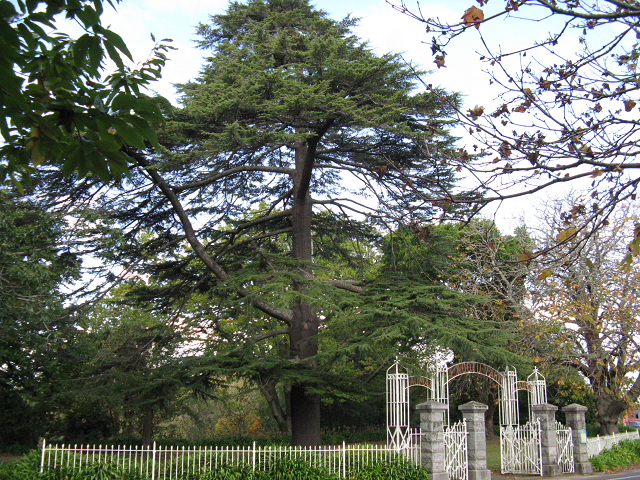Cedar of Lebanon (cedrus libani)2
Six years ago I pondered whether this 100 year old tree near the gates to Te Koo utu would survive the construction of the new roundabout. Thankfully it is still there, so time for an update.
‘Around the World in 80 Trees’ tells me that this tree played a ‘critical role in the development of civilization’. Its native range is now confined to isolated mountains of Lebanon, Syria and southern Turkey, but vast cedar forests once stretched across the Eastern Mediterranean to southwestern Iran. And cedar had everything going for it, which is probably the reason for its downfall. Tolerant of both summer drought and winter freezing, its wood was a valuable commodity, used for building the palaces and temples of Assyria, Persia and Babylon, and the trading ships of the Phoenicians. The ancient Egyptians used its resin for embalming the Pharaohs before their burial in the pyramids.
Over-exploitation of cedar is already evident in the 4000 year old Sumerian ‘Epic of Gilgamesh’. Conservation efforts were made including in AD 118 the creation of an imperial cedar forest by the Roman emperor Hadrian. Perversely, it now seems that global warming may help reverse its decline; a recent search for a forest species which will thrive in central Europe in coming centuries shows that Cedrus libani may fit the bill.
Apparently planted as a seed by a soldier returning from the Middle East after World War 1, this tree deserves our respect, and given a chance it may live another 2000 years!


